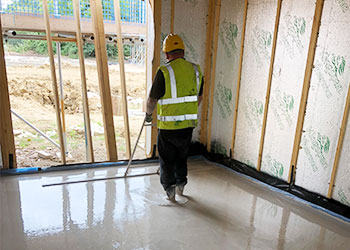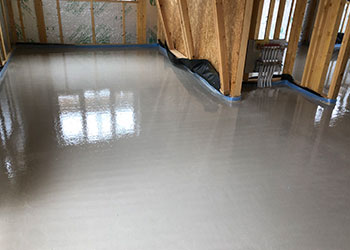If you are going to install underfloor heating, whether as a new project or in an existing building, it will need a screed to cover the system and produce a level surface on which to lay the final floor surface, whatever that may be.
Without any doubt, the best screed for underfloor heating is a liquid screed because of the many benefits that this has over sand and cement screeds. This is particularly true in the case of a water-based system.
When you use a liquid screed, it will flow all around the water piping leaving absolutely no gaps at all. This results in a system which produces heat evenly without any air gaps around the pipes.
When using a sand and cement screed, for example, it has to be laid by hand with a trowel, and it is almost impossible to do this without leaving areas where the screed is not in contact with the water pipes. That means that the system is not 100% efficient and it follows that it will use more energy to attain the required temperature in the room, which obviously means that it is more expensive to run.

Heat Transference
However, when considering the best screed for underfloor heating, a liquid flowing anhydrite screed has another advantage over and above sand and cement. That is its’ heat transference properties. Liquid anhydrite screed is almost twice as efficient at this, which again means that the room will heat up more quickly and that means that it uses less energy to reach the desired temperature. In turn, that means that it costs less to run.
The advantages of a liquid flowing anhydrite screed don’t stop there, either. When working on any construction project the objective is to finish the work on time, and preferably even earlier, because it obviously saves money on labour.
The liquid screed that we can install for you at UK Screeds will be dry enough to walk on within 24 – 48 hours. What that means is that there will be no delays for other tradesmen – electricians, carpenters, double glazing installers, and so on – who have to work on the project.
Then there is also the drying time before the final flooring can be installed. Our liquid anhydrite screed can not only be walked on in as little as a day after laying, but it can be force-dried after seven days, again saving time on the project.








